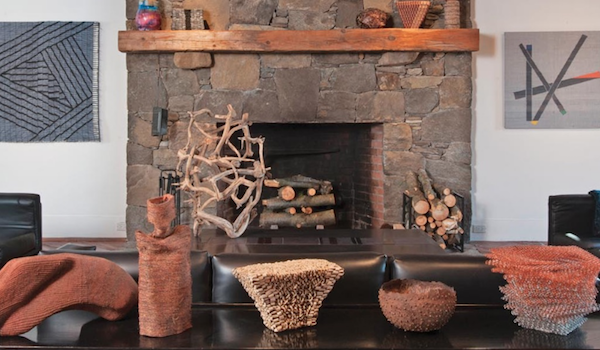
Consuming Fibre

In Wilton, Connecticut, about 75 minutes north of New York City, you’ll find a big 1895 barn nestled amongst the trees. The barn, with its soaring ceilings, natural wood and light-infused open spaces, is perfect for displaying art. Rhonda Brown and husband Tom Grotta – she an attorney, he a photographer and graphic artist – are the owners of this barn, and browngrotta arts. Launched in 1987, over the last 27 years it has become the world’s leading gallery for artists who utilise fibre…

The term ‘fibre art’ has never truly been embraced by those within the field nor even been a good fit for that matter (just think, no one has ever coined the term ‘paint art’ to refer to art made from oil on canvas): though it is arguably an improvement over the commercially irrelevant, by making work that is not easily categorised.

Norma Minkowitz creates sculpture that happens to use crochet. Dorothy Gill Barnes has glass objects encased in basket forms. Dail Behennah uses enamel, metal, willow, guitar strings to make architectural structures, that bear little resemblance to their basket-making origins. Are they baskets or sculpture? Does it matter? In Brown's view, artists are responding to a world in which globalisation has led to an exchange of ideas and stimuli.

‘It’s harder to pigeonhole. In the fifties, sixties, and seventies, artists were experimenting with fibre techniques. That spirit of experimentation seemed to wane in the shiny, slick eighties and nineties, as fibre had a difficult time finding a following. Now, the popularity of these materials and techniques is on an upsurge, and the term 'fibre art' no longer has the same resonance because the techniques and materials have been picked up and put to use by the ‘fine art’ community – although, generally, without the technical mastery.’
You can read this article by Rhonda Sonnerberg in full in Selvedge issue 65.
